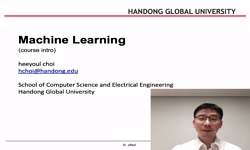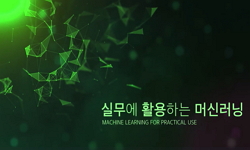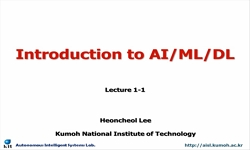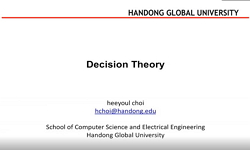Prediction of deflections of reinforced concrete (RC) flexural structures is vital to evaluate the workability and safety of structures during its life cycle. Empirical methods are limited to predict a long-term deflection of RC structures because the...
http://chineseinput.net/에서 pinyin(병음)방식으로 중국어를 변환할 수 있습니다.
변환된 중국어를 복사하여 사용하시면 됩니다.
- 中文 을 입력하시려면 zhongwen을 입력하시고 space를누르시면됩니다.
- 北京 을 입력하시려면 beijing을 입력하시고 space를 누르시면 됩니다.


Machine learning for predicting long-term deflections in reinforce concrete flexural structures
한글로보기https://www.riss.kr/link?id=A107087222
-
저자
Anh-Duc Pham (The University of Danang – University of Science and Technology) ; Ngoc-Tri Ngo (The University of Danang – University of Science and Technology) ; Thi-Kha Nguyen (The University of Danang – Campus in Kontum)
- 발행기관
- 학술지명
- 권호사항
-
발행연도
2020
-
작성언어
English
- 주제어
-
등재정보
KCI등재,SCOPUS
-
자료형태
학술저널
-
수록면
95-106(12쪽)
-
KCI 피인용횟수
0
- DOI식별코드
- 제공처
-
0
상세조회 -
0
다운로드
부가정보
다국어 초록 (Multilingual Abstract)
Prediction of deflections of reinforced concrete (RC) flexural structures is vital to evaluate the workability and safety of structures during its life cycle. Empirical methods are limited to predict a long-term deflection of RC structures because they are difficult to consider all influencing factors. This study presents data-driven machine learning (ML) models to early predict the long-term deflections in RC structures. An experimental dataset was used to build and evaluate single and ensemble ML models. The models were trained and tested using the stratified 10-fold cross-validation algorithm. Analytical results revealed that the ML model is effective in predicting the deflection of RC structures with good accuracy of 0.972 in correlation coefficient (R), 8.190 mm in root mean square error (RMSE), 4.597 mm in mean absolute error (MAE), and 16.749% in mean absolute percentage error (MAPE). In performance comparison against with empirical methods, the prediction accuracy of the ML model improved significantly up to 66.41% in the RMSE and up to 82.04% in the MAE. As a contribution, this study proposed the effective ML model to facilitate designers in early forecasting long-term deflections in RC structures and evaluating their long-term serviceability and safety.
참고문헌 (Reference)
1 Chou, J. -S., "The use of artificial intelligence combiners for modeling steel pitting risk and corrosion rate" 65 : 471-483, 2017
2 Chou, J. -S., "The use of artificial intelligence combiners for modeling steel pitting risk and corrosion rate" 65 : 471-483, 2016
3 Panfilov, D. A., "The methodology for calculating deflections of reinforced concrete beams exposed to short duration uniform loading(based on nonlinear deformation model)" 91 : 188-193, 2014
4 Innofactor, "The advantages of machine learning"
5 Hall, M., "The WEKA data mining software : An update" 11 (11): 10-18, 2009
6 Wolpert, D. H., "Stacked generalization" 5 (5): 241-259, 1992
7 Rodriguez-Gutierrez, J. A., "Shortand long-term deflections in reinforced, prestressed, and composite concrete beams" 133 (133): 495-506, 2007
8 John, C. P., "Sequential minimal optimization: A fast algorithm for training support vector machines" Microsoft Research 1998
9 Ruholla Jafari-Marandi, "Self-Organizing and Error Driven (SOED) artificial neural network for smarter classifications" 한국CDE학회 4 (4): 282-304, 2017
10 Dietterich, T. G., "Proceedings of the First International Workshop on Ensemble Methods in Machine Learning, Multiple Classifier Systems" Springer 1-15, 2000
1 Chou, J. -S., "The use of artificial intelligence combiners for modeling steel pitting risk and corrosion rate" 65 : 471-483, 2017
2 Chou, J. -S., "The use of artificial intelligence combiners for modeling steel pitting risk and corrosion rate" 65 : 471-483, 2016
3 Panfilov, D. A., "The methodology for calculating deflections of reinforced concrete beams exposed to short duration uniform loading(based on nonlinear deformation model)" 91 : 188-193, 2014
4 Innofactor, "The advantages of machine learning"
5 Hall, M., "The WEKA data mining software : An update" 11 (11): 10-18, 2009
6 Wolpert, D. H., "Stacked generalization" 5 (5): 241-259, 1992
7 Rodriguez-Gutierrez, J. A., "Shortand long-term deflections in reinforced, prestressed, and composite concrete beams" 133 (133): 495-506, 2007
8 John, C. P., "Sequential minimal optimization: A fast algorithm for training support vector machines" Microsoft Research 1998
9 Ruholla Jafari-Marandi, "Self-Organizing and Error Driven (SOED) artificial neural network for smarter classifications" 한국CDE학회 4 (4): 282-304, 2017
10 Dietterich, T. G., "Proceedings of the First International Workshop on Ensemble Methods in Machine Learning, Multiple Classifier Systems" Springer 1-15, 2000
11 Rosenblatt, F. X., "Principles of neurodynamics: Perceptrons and the theory of brain mechanisms" Spartan Books 1961
12 ZP, B., "Predictions of concrete effects using age adjusted effective modulus method" 69 : 212-217, 1972
13 Jang, J., "Prediction of optimum heating timing based on artificial neural network by utilizing BEMS data" 22 : 66-74, 2019
14 Kara, I. F., "Prediction of deflection of reinforced concrete shear walls" 40 (40): 777-785, 2009
15 Bilous, I., "Parametric analysis of external and internal factors influence on building energy performance using non-linear multivariate regression models" 20 : 327-336, 2018
16 Sushil Kumar, "On the learning machine with compensatory aggregation based neurons in quaternionic domain" 한국CDE학회 6 (6): 33-48, 2019
17 Kittler, J., "On combining classifiers" 20 (20): 226-239, 1998
18 Siamak Ghadimi, "Multiple Crack Identification in Euler Beams using Extreme Learning Machine" 대한토목학회 21 (21): 389-396, 2017
19 Chou, J. -S., "Machine learning in concrete strength simulations : Multination data analytics" 73 : 771-780, 2014
20 Espion, B., "Long-term sustained loading tests on reinforced concrete beams : A selected data base" 88 (88): 88-81, 1988
21 Gribniak, V., "Long-term deflections of reinforced concrete elements : Accuracy analysis of predictions by different methods" 17 (17): 297-313, 2013
22 Mar´ı, A. R., "Long-term deflections in cracked reinforced concrete flexural members" 32 (32): 829-842, 2010
23 Alwis, W. A. M., "Long-term deflection of RC beams under constant loads" 21 : 168-175, 1999
24 Olorunniwo, A., "Long-term deflection of RC beams" 120 (120): 2220-2226, 1994
25 Bakoss, S. L., "Long term deflections of reinforced concrete beams" 121 (121): 203-212, 1982
26 Araujo, J. M., "Improvement of the ACI method for calculation of deflections of reinforced concrete beams" 7 : 49-60, 2005
27 Liang, H., "Improved estimation in multiple linear regression models with measurement error and general constraint" 100 (100): 726-741, 2009
28 Cheng, M. Y., "Highperformance concrete compressive strength prediction using time-weighted evolutionary fuzzy support vector machines inference model" 28 : 106-115, 2012
29 Morris, M. D., "Factorial sampling plans for preliminary computational experiments" 33 (33): 161-174, 1991
30 Chou, J. -S., "Enhanced artificial intelligence for ensemble approach to predicting high performance concrete compressive strength" 49 : 554-563, 2013
31 Ngo, N. -T., "Early predicting cooling loads for energyefficient design in office buildings by machine learning" 182 : 264-273, 2019
32 Tseng, T. -L., "E-quality control : A support vector machines approach" 3 (3): 91-101, 2016
33 Branson, D. E., "Deformation of concrete structures" McGraw-Hill 1977
34 ACI, C., "Deflections of reinforced concrete flexural members" 63 (63): 637-674, 1966
35 Gribniak, V., "Deflection prediction of reinforced concrete beams by design codes and computer simulation" 56 : 2175-2186, 2013
36 Gilbert, R. I., "Deflection calculation for reinforced concrete structures—why we sometimes get it wrong" 96 (96): 1027-1032, 1999
37 Bustillo, A., "Data-mining modeling for the prediction of wear on forming-taps in the threading of steel components" 3 (3): 337-348, 2016
38 Jamil, L. S., "Data analysis based on datamining algorithms usingWekaworkbench" 5 (5): 262-267, 2016
39 Chong, A., "Continuous-time Bayesian calibration of energy models using BIM and energy data" 194 : 177-190, 2019
40 Ghali, A., "Concrete structure : Stress and deformation" J. W. Arrowsmith Ltd 1986
41 Naderpour, H., "Compressive strength prediction of environmentally friendly concrete using artificial neural networks" 16 : 213-219, 2018
42 Kuncheva, L. I., "Combining pattern classifiers : Methods and algorithms" Wiley 2014
43 Beton, C. E. -I. D, "CEB-FIP model code 1990" 1990
44 Ferrario, E., "Bootstrapped Artificial Neural Networks for the seismic analysis of structural systems" 67 : 70-84, 2017
45 Breiman, L., "Bagging predictors" 24 (24): 123-140, 1996
46 Bonsang Koo, "Applying novelty detection to identify model element to IFC class misclassifications on architectural and infrastructure Building Information Models" 한국CDE학회 5 (5): 391-400, 2018
47 Pan, Q., "An efficient reliability method combining adaptive Support Vector Machine and Monte Carlo simulation" 67 : 85-95, 2017
48 Erdal, H. I., "Advancing monthly streamflow prediction accuracy of CART models using ensemble learning paradigms" 477 : 119-128, 2013
49 Smola, A. J., "A tutorial on support vector regression" 14 (14): 199-222, 2004
50 Chang Kook Oh, "A Bayesian Learning Method for Structural Damage Assessment of Phase I IASC-ASCE Benchmark Problem" 대한토목학회 22 (22): 987-992, 2018
동일학술지(권/호) 다른 논문
-
Image-based extrusion with realistic surface wrinkles
- 한국CDE학회
- Anouar Ragragui
- 2020
- KCI등재,SCOPUS
-
Robust design optimization using surrogate models
- 한국CDE학회
- Andy J. Keane
- 2020
- KCI등재,SCOPUS
-
- 한국CDE학회
- Zhiyu Sun
- 2020
- KCI등재,SCOPUS
-
Application of homeostatic principles within evolutionary design processes: adaptive urban tissues
- 한국CDE학회
- Milad Showkatbakhsh
- 2020
- KCI등재,SCOPUS
분석정보
인용정보 인용지수 설명보기
학술지 이력
| 연월일 | 이력구분 | 이력상세 | 등재구분 |
|---|---|---|---|
| 2023 | 평가예정 | 해외DB학술지평가 신청대상 (해외등재 학술지 평가) | |
| 2020-01-01 | 평가 | 등재학술지 유지 (해외등재 학술지 평가) |  |
| 2017-03-13 | 학술지명변경 | 한글명 : Journal of Computational Design and Engineering -> Journal of Computational Design and Engineering 외국어명 : Journal of Computational Design and Engineering -> Journal of Computational Design and Engineering |  |
| 2017-03-01 | 평가 | SCOPUS 등재 (기타) |  |
| 2016-06-13 | 학회명변경 | 한글명 : 한국CAD/CAM학회 -> 한국CDE학회영문명 : Society Of Cadcam Engineers -> Society for Computational Design and Engineering |
학술지 인용정보
| 기준연도 | WOS-KCI 통합IF(2년) | KCIF(2년) | KCIF(3년) |
|---|---|---|---|
| 2016 | 0 | 0 | 0 |
| KCIF(4년) | KCIF(5년) | 중심성지수(3년) | 즉시성지수 |
| 0 | 0 | 0 | 0 |




 KCI
KCI






